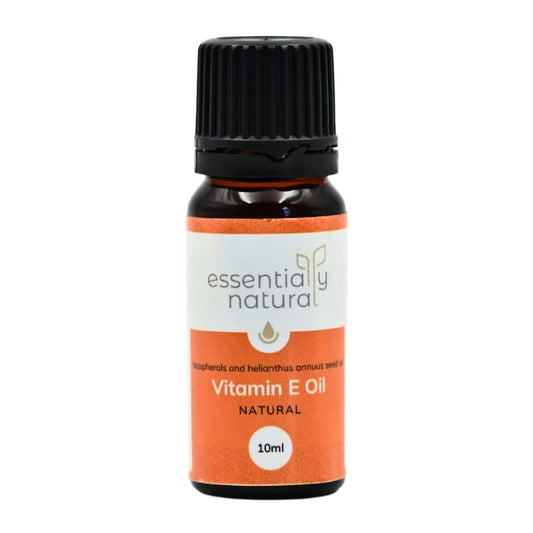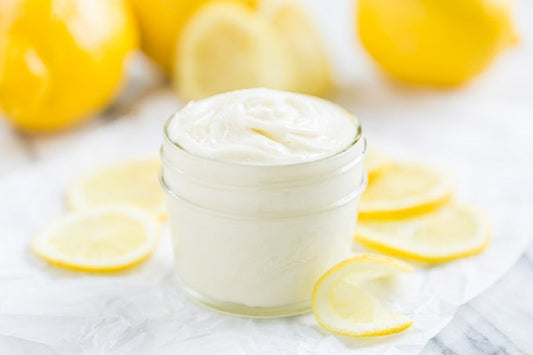
What to use to brighten skin, counter Hyperpigmentation and the danger of Skin Bleaching
Aiden van WykDark spots.
We've all had them - whether from stubborn acne scars, pregnancy pigmentation, or too much sun. While melanin is our blessed natural defense - what's meant to protect us can sometimes overstay its welcome.
Here we'll explore effective ways to rebalance your tone, fade uneven patches and get back that smooth, even glow you were born with.
What causes Dark Spots and Hyperpigmentation?
Not all dark spots are the same - and that matters when it comes to treatment. Hyperpigmentation refers to when the skin is darker due to excess melanin production. But what causes hyperpigmentation can differ, and that also impacts how hard it'll be to clear up, for example:
- Freckles: These are usually genetic and difficult to fade.
- Melasma: This is often triggered by hormonal changes (like pregnancy) and sun exposure. While this can improve, it can be persistent.
- Solar Lentigines (sunspots): This is more common as people get older and is exposed to UV rays, but can be treated.
- Post Inflammatory Hyperpigmentation: Darker marks caused by skin trauma, like acne, that is likely to heal over time.
Knowing what type of hyperpigmentation helps us be aware the root cause too. If it's pregnancy-related, for instance, it might be best to wait until hormones settle before treating it. If it's caused by sun exposure, we know to use sunblock immediately or if it's the remnants of acne, we know to start treating the acne itself while also dealing with the dark spots (a great product here would be Azelaic Acid, which is helpful for acne and brightening).
Lifestyle and Hyperpigmentation
I'm a firm believer that healthy skin begins within. Just like hormonal fluctuations can impact the pigment of your skin, other factors that dull skin include:
- Smoking and drinking alcohol - This in particular dehydrates and deprives the skin of oxygen and vitamins (like Vitamin C), accelerating aging.
- Poor diet and dehydration, particularly when it's lacking in antioxidant and anti-inflammatory foods, probiotics and healthy oils.
- Lack of sleep (as sleeping promotes cell repair and regeneration)
- Stress and anxiety
- Using harsh and irritating skincare products can damage your skin barrier and cause the overactivity of Melanocytes.
- Generally low skin cell turnover
It's true that as you get older your skin cells turnover rate goes from every 28 days to around every 40 days, leading to buildup and a dull complexion - meaning that dull skin does become more of a challenge as we age. But the fact that we know this means that we know to prioritise exfoliation in folks older than 30 and 40, as it is essential for clearing debris and encouraging regeneration.
Please - Do not Bleach your skin
An unfortunate yet prevalent practice, particularly in highly melanated communities, is skin bleaching - not to treat dark patches or hyperpigmentation, but to lighten the entire skin's natural colour.
This is not good.
Skin bleaching severely disrupts your melanocytes (the cells that produce pigment), thins out your skin, and leaves it vulnerable to breakouts, irritation, and environmental damage. Yes, your skin may look lighter at first - but when the bleaching stops, the melanocytes can rebound aggressively, leading to widespread and sometimes permanent hyperpigmentation. In severe cases, the damage to your skin barrier and pigment-producing cells may never fully heal.
For these reasons we highly recommend not bleaching your skin. A healthy glow is beautiful in every complexion.
An easy explanation of how you become pigmented:
Now that we know why it's there, it's important to know also how pigment forms. Focusing on only the visible dark skin is like putting a bucket under a dripping roof but not dealing with the leak itself. What we need to do is counter the cause of the problem and the visible result simultaneously.
A fun metaphor I found for remembering this is to imagine placing an online order. I know it seems kooky, but if you memorise it like this you will remember it forever, I promise :)
- Phase 1: Placing the Order of Melanin
This is known as Pigment Production and it's when your skin's pigment-producing cells - melanocytes - start creating melanin. Sun exposure, hormones or inflammation placed an order for pigment, and it is being processed by an enzyme, tyrosinase, who then creates your order and gets it ready to be collected.
- Phase 2: The Courier Guy is transporting your order
Just like your order being shipped, melanin now begins its journey from the melanocytes to the surface skin cells (keratinocytes). This is called Pigment Transfer. Think of this as when your order left the warehouse but is not at your home yet.
- Phase 3: Your Order arrives - and guess what? It's real dark.
The pigment arrives and is deposited into the outer skin cells - known as Pigment Deposition. Now you can see the dark spots. From this point the pigment could fade over time or stay much longer.
Treating Hyperpigmented Skin:
The first and most important step in treating hyperpigmentation is preventing further damage. That means that daily sunblock with an SPF of at least 30 is non-negotiable. Without it, all the treatments you do are likely to be undone. Once you're applying the sun protection, you can move on to treating the pigmentation itself with targeted ingredients. The best way to choose products and ingredients is to choose ingredients that address all the phases of pigment production mentioned above.
Phase 1: Pigment Production
These ingredients help stop the overproduction of melanin in the first place:
- Retinoids
- Azelaic Acid
- Arbutin (can release hydroquinone over time, so do take breaks between extended use. This can be extracted from Bearberry)
- Liquorice Root
- Turmeric
- Kojic Acid
- Vitamin C (often paired with Vitamin E and Ferulic Acid to stabilise it)
- Niacinamide
- Green Tea
- Silymarin (can be extracted from Milk Thistle)
- Glutathione (boosted by MSM, which also calms inflammation and acne)
Phase 2: Pigment Transfer
These ingredients help block the transfer of pigment from melanocytes to skin cells:
- Retinoids
- Niacinamide
- Soy (its isoflavones stop the transfer, which is also found in Red Clover)
Phase 3: Pigment Deposition
These ingredients help remove deposited pigment and support skin turnover:
- Retinoids
- Physical Exfoliants like Jojoba beads and Apricot Kernels
- Chemical Exfoliants like Glycolic, Lactic, Mandelic, or Salicylic Acid
- Gotu Kola
- Antioxidants
The Vitamin C Problem
I love Vitamin C - it's great inside and out, but it can be a tough ingredient to tango with. It's found to be somewhat irritating for certain skin types, and many formulators find it difficult to stabilise.
I learnt to wrestle with it by having a product completely dedicated to Vitamin C Stability. That means that every product in this formulation (I prefer Gel Serums) is chosen to stabilise the Vitamin C. That means using Black Bottles, Chelating Agents, adding both Ferulic Acid and Vitamin E, keeping the pH just under four and even storing it in my fridge.
The Niacinamide Problem
Niacinamide is fantastic. If you have skin and you're not using Niacinamide, you're missing out. It's gentle, brightens skin, strengthens the barrier, regulates oil production and calms inflammation - truly the jack of all trades of skincare.
But it's not your hero ingredient.
Think of Niacinamide as a boost, the supporting act - but not the headliner. Without the right actives, Niacinamide alone won't counter hyperpigmentation. You may notice generally brighter skin, but if you're packing in layers of Niacinamide and not seeing Dark Spots fade - you may be missing something, your team is missing its lead.
Making Your Own Skin Brightening Extracts
While using raw ingredients and formulating with them is a great choice, it doesn't stop there. You can naturally find a variety of ingredients that can be extracted at home to create your own tinctures or glycerites. Glycerites, in particular, offer a more stable way to retrieve Vitamin C compared to standard extracts, making them easier to work with in DIY skincare.
Here are a few ingredients worth exploring:
- Pineapple: Pineapple contains bromelain, an enzyme that gently exfoliates dead skin cells. It's rich in Vitamin C and AHAs, helping to fade hyperpigmentation and brighten dull skin.
- Lemon Peel: Lemon Peel is dense in Vitamin C and flavonoids, helping even out skin tone and gently exfoliating. Do kindly note that Lemon can cause photosensitivity, so do only use this at night.
- Hibiscus: Contains AHA's, Malic Acid and potent antioxidants, resurfacing the skin and promoting cell renewal.
- Tomato: Tomatoes are rich in lycopene, Vitamin C, and natural acids. These fight dullness, promote clarity, and help tighten pores.
- Rosehip: Naturally high in Vitamin C and flavonoids for skin regeneration and correcting uneven skin tone.
- Apple Peels: Apple peels contain Malic Acid and polyphenols that help resurface skin and promote even tone.
It might be even better to combine ingredients in a tincture for synergistic results, like:
- Pineapple, Hibiscus and Liquorice Root
- Rosehip, Lemon Peel and Tomato
Should you see a dermatologist?
Sometimes serums just aren't enough. This is especially true when pigmentation is persistent, widespread, or has an underlying cause that isn't immediately obvious - like hormones. This is where a dermatologist can be incredibly helpful, not only in identifying the root cause but also in prescribing treatments that are only available with a prescription.
Some medications are oral, like Tranexamic Acid or Polypodium Leucotomos. Others are powerful topicals like Hydroquinone or Tretinoin. For more resistant cases, dermatologists may offer in-office procedures like highly concentrated chemical peels, laser treatments, or deep microneedling.
Here is how to know if you should see a dermatologist:
- Large and/or numerous dark spots
- Melasma
- Acne scars that won't fade
- Uneven skin tone despite consistent skincare
- Your skin tone is causing you significant emotional stress
Where (and how) to use these ingredients:
I'm going to be completely honest with you: putting Niacinamide or Glycolic Acid in your face wash is a waste. Active ingredients need time on your skin to actually work - rinsing them off after a few seconds won't do much more than... really nourish and show love to your pipes and drains.
Your next thought might be, "Okay, then let's put them in a cream." Fair! And that can work - but strong actives in moisturisers can sometimes be too irritating for everyday use. Think of your moisturiser as a calming, reparative step. After hitting your skin with acids or potent extracts, you want your moisturiser to rebuild the barrier, soothe and nourish your microbiome - not fight another battle.
The ideal spot for your actives is in your serum. Serums are where you can get specific: use a turmeric extract and Niacinamide combo for brightening and calming, an Azelaic Acid serum for redness and spots. A great DIY is to mix dissolved Vitamin C powder with Honey. Yes, it'll tingle - but your skin will shine like it's been kissed by the divine.
An instant glow hack -
These tips are great but may take some time. If you're interested in a more immediate glow, make a "Glotion". "Glotions" are where skincare and makeup intermingle, creating a product that hydrates and highlights. You can do this by having your lotion ingredients be maximized for hydration, including humectants like Glycerine, Panthenol and Hyaluronic Acid - and then the secret touch: add just a smidgen of Mica to create a soft, celestial glow.
This works because your skin is so hydrated - along with the shimmery Mica - that you reflect all light, seeming as if the glow is flowing from within. You can choose a Mica that is like your complexion or go for White Gold.





























